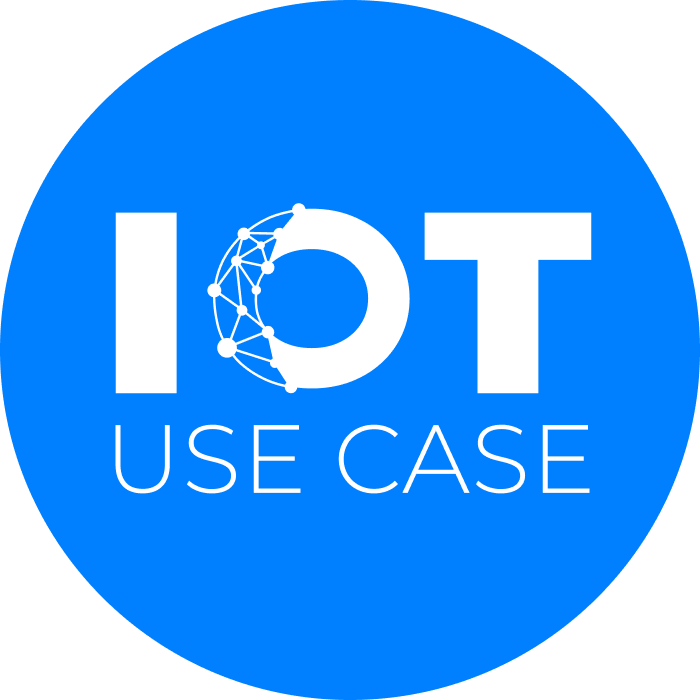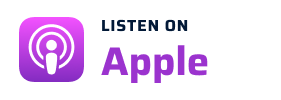In this Industrial IoT podcast episode, I talk to Dr. Verena Brenner, Managing Director of PROTH!NX (subsidiary HDI Global SE) about insurance use cases in industry, what PROTH!NX actually understands as a use case and which insurance risks are considered in this context.
Introduction | PROTH!NX and the Group
The episode begins with the introduction of Dr. Verena Brenner, Managing Director of PROTH!NX. Verena holds a PhD in International Logistics and has already gained experience in the field of cold chain monitoring before joining PROTH!NX. She has over 6 years of experience in the industrial insurance sector through HDI Risk Consulting and has been advising clients on business interruption risks and new business models ever since. She joined PROTH!NX at the beginning of 2019 as Project Manager IoT and has been successfully managing the spin-off PROTH!NX since the end of 2019.
At the beginning of the episode, we first classify PROTH!NX as an independent company within the HDI Group and talk about the internal cooperation and positioning. PROTH!NX focuses on driving forward industrial IoT use cases, reducing loss drivers and developing new solutions and products. The employees work very closely with the engineers at HDI Risk Consulting. Verena also explains the tasks of underwriting in this context. The tasks are mainly to define the scope of coverage of the insurance with the customer and how big the technical risk is. The technical risk is calculated supportingly with the unit of HDI Risk Consulting. HDI Risk Consulting employs around 180 engineers worldwide who come from a variety of scientific backgrounds. Verena elaborates that internal collaboration in the use cases depends heavily on the focus. From machine breakdown or construction risks to transport insurance for heavy loads or bulk goods, several areas are represented.
Verena explains that PROTH!NX focuses on defining the effects for existing insurance policies and developing the demand for existing insurance models. To this end, HDI is primarily talking to individual industrial customers, who are often also HDI owners with correspondingly close relationships. Verena explains that many industrial customers have started to deal with the topic of IIoT. Customers are often already using solutions with corresponding sensors for condition monitoring in order to create transparency for defined processes. This often takes the form of so-called POCs (Prove of Concepts). HDI’s expertise can be used to supplement these analyses. However, not all losses can be predicted on such a basis. Different risk models are developed depending on the application, explains Verena. Customers’ insurance cover requirements change over time and many are looking for new partners from other sectors.
PROTH!NX customers are represented in all sectors. This is mainly due to the history of the HDI Group. From customers in the chemical, textile, steel and food sectors, PROTH!NX plays a role in various stages of the value chain.
“We need to differentiate between use cases and buzzwords”
Use case finding is subject to a stringent process at PROTH!NX. Use case finding starts with an idea, either internally or externally. This then goes through a qualification phase and is then evaluated using various criteria. Verena notes that the effort required for subsequent product development is often underestimated by many. It is important to substantiate the initial idea at an early stage. She cites the example of water leakage. The leak as such is only a use case for PROTH!NX if certain requirements are met. These are, for example, the type of leakage, such as fresh or waste water, micro-leakage or burst pipes and the assessment of technical feasibility. The frequency of the damage, the target group and the different interest groups are also influencing factors.
Risks that have existed for a long time or new risks that arise are either tried to be minimized or transferred in the use case consideration. In addition to technical feasibility, there is also the added value discussion. Cost reduction, loss reduction and earnings potential must be balanced. Verena elaborates that a scalable approach is sought that goes beyond individual consulting.
There are different approaches in the business models. Verena gives an example from the area of performance guarantees. Here, PROTH!NX sits down with the customer and underwriting in an interdisciplinary team to understand the product and define the value-added guarantees. Questions such as “What are the requirements for the database?”, “What interfaces are available?” and “How can we ensure that reproducible results are achieved?” are discussed here. To make this topic tangible, Verena gives an example from mechanical engineering. There are two options for the machine manufacturer in an IIoT use case. Either he achieves greater savings, such as energy savings, or he achieves a higher output, such as a larger production quantity or reduced waste. Although the machine with the sensor package is more expensive for the end customer, it offers advantages if this performance is guaranteed.
Pay per use models entail significantly higher expenses for the machine manufacturer. There is a significant impact on the balance sheet of the company and the management of sales. Turnover and other key financial figures are treated differently to traditional machine sales. Here, companies often need a larger consulting team and corresponding restructuring, Verena elaborates.
Read expert article on pay per use now
Dipl.-Ing. Steffen Himstedt
CEO
HDI also incurs expenses for underwriting. Fixed costs become variable costs, which are no longer covered by business interruption insurance. This results in risk shifts in existing risk assessment models. Verena gives the example of a paper press, which no longer belongs to the company and therefore no longer has the responsibility of the risk of failure. In this context, Verena addresses the blurring boundaries and complexity of these risk allocations – for example, when a revenue loss occurs.
From her professional background, Verena cites an example use case from the field of cold chain monitoring to help understand the topic. Not all players in this supply chain have any interest at all in transparency of their performance. Consequently, exceeding the temperature of a critical good during transport leads to a liability issue with corresponding consequences.
Verena then brings another exciting use case for monitoring avocado shipments to Europe. Here, the transporters are often robbed and the corresponding insurance losses occur. Technologies like blockchain can help promote transparency of such incidents here. When implementing such solutions, however, care should be taken to ensure that these are established transport chains with permanent players. Verena also notes that not every company is directly interested in sharing the data with the insurer either. Damage issues and use cases with a win-win situation should be the focus here.
To round off the topic of damage patterns, we also talk about natural hazards and fire risks. There are established early warning systems for natural hazards, for use cases such as backwater, flood or dedicated water damage. Verena notes that fire causes can vary widely. Electrical causes due to people, dusty environments, short circuits or faulty components in the machine itself can lead to fire, for example. Stronger networking of protection systems can save documentation efforts and time through walk-throughs for audits.
Read expert article on “Natural hazards” now
Peter Rüegg
IT Application Manager at OBT AG
Finally, Verena gives us an insight into the future of the insurance industry through industrial IoT solutions. Insurance solutions are becoming more intelligent and sensor data is increasingly being used as a source for risk calculations. New business models with loss reduction for the customer require cross-industry cooperation and interdisciplinary collaboration. Insurance needs are changing, new products are emerging and interaction with customers is becoming more intensive, explains Verena. PROTH!NX wants to tackle “production development on the production line”, address this with the right experts and work continuously on solutions and new products. These will safeguard existing insurance business models and help to understand new ones.
Are you interested in working with PROTH!NX?
Reach out to them through Linkedin!
Dr. Verena Brenner
Managing Director PROTH!NX
More about this implementation partner
PROTH!NX is a Berlin-based manufacturer of IIoT and blockchain solutions that develops innovative services and business models together with the industry. The scope of PROTH!NX is the development of digitally enhanced and digitally disruptive products, services and business models related to industrial insurance. PROTH!NX is a start-up with the financial stability of a global industrial insurance company. Our clients range from hidden champions to international companies in all industries. The mission is to develop technology-driven solutions to protect and enable business models.
Contact us now | Find pilot projects | Apply use cases
Ing. Madeleine
Digital Business Development | IIoT










